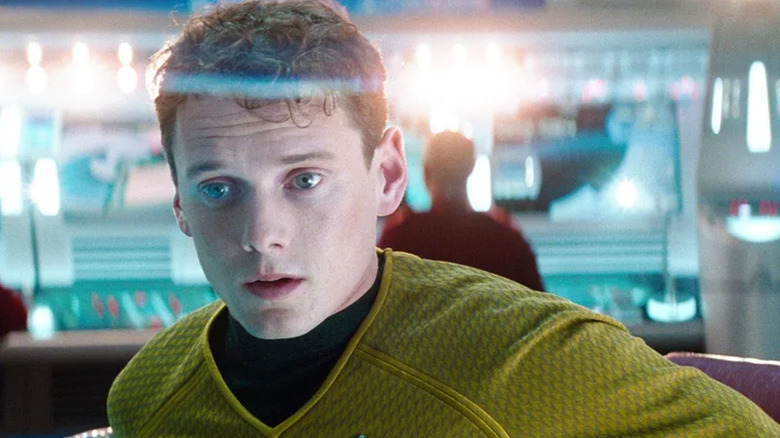When J.J. Abrams rebooted the “Star Trek” franchise in 2009, it was quite a gamble to convince longtime Trekkies that anyone but William Shatner and Leonard Nimoy could play Kirk and Spock. But while the reboot was ultimately well received by both critics and audiences, who praised newcomers Chris Pine and Zachary Quinto, there was one aspect of the 2009 picture that was, well, distracting to say the least. If the infamous J.J. Abrams lens flares were the first thing that came to your mind, then you’re in good company. Interestingly, even the director himself has come to realize his mistake.
Following the release of “Star Trek,” Abrams knew that he had gone a bit overboard. “I know there are certain shots where even I watch and think, ‘Oh, that’s ridiculous; that was too many,'” he told io9 in 2009. “But I love the idea that the future was so bright it couldn’t be contained in the frame.” The idea that the “bright future” of the “Star Trek” universe would be the catalyst for this distinct stylistic choice is an interesting one, for sure, but one that quickly goes too far as Abrams added more and more to each frame. Somehow, they got even worse in “Star Trek Into Darkness.”
For the sequel, Abrams’ addiction to lens flares went into overdrive, peppering in more intense flares in than before. Later, the director revealed that his wife struggled to even understand what was going on while watching early cuts of the film. “But I know it’s too much, and I apologize,” he admitted to Crave Online (via The Guardian). “I’m so aware of it now.” After “Star Trek Into Darkness,” Abrams bowed out from directing the third film, moving on to “Star Wars” instead.
A lot went into those Star Trek lens flares
Not only were J.J. Abrams’ lens flares a purposeful choice to submerge the viewer in the ethos of the Federation’s future, but the director also used a simple technique to create the effect in camera. “There is something incredibly unpredictable and gorgeous about them,” Abrams told io9. “Our DP would be off camera with this incredibly powerful flashlight, aiming it at the lens.” Adjusting the light depending on the angle and framing, the director noted that it became something of an art to create each new flare. They even used mirrors to bounce the light to meet their specific lens flare needs.
“We had two cameras, so sometimes we had two different spotlight operators,” Abrams elaborated, adding that it almost became a safety hazard. With all that went into putting this effect together, it’s no wonder that Abrams fought to keep it in the movie — and, to be fair, it mostly works in the first installment. Sure, there are times where it’s distracting, but his idea for a literally bright future works well for the 2009 film. Without the special effect, “Star Trek” would have appeared a bit duller, and the concept infused the picture with Abrams’ unique vision for the sci-fi series. Still, by the end of the reboot, Abrams remained thoroughly convinced that the lens flares added to the environment he was creating rather than distracted from it, which is ultimately what got him into trouble.
Abrams has largely abandoned the lens flares
Of course, J.J. Abrams’ penchant for going a bit too over the top with the concept is part of what made “Star Trek Into Darkness” a chore to watch at times. The overpowering lens flares (with sometimes several high-powered beams in a single shot) kept the audience on their guard in a way that put some off to the film entirely. Thankfully, it appears he’s mostly moved on from that. At his wife’s insistence, Abrams pulled back from his vision for a “bright future,” moving on from the “Star Trek” franchise to another galaxy far, far away for “Star Wars: Episode VII – The Force Awakens.”
“I’ve allowed lens flares to take a very back seat,” Abrams claimed at a “Celebrity Nerd-Off” event ahead of “The Force Awakens” (via The Hollywood Reporter). But while the lack of lens flares was certainly one of the biggest ways Abrams surprised us with “Episode VII,” a few still snuck into the final product. Admittedly, those that made it in felt quite tasteful compared to the bombardment we received only a few years earlier, as the filmmaker pivoted away from his signature stylistic choice. While we would still put Abrams’ original “Star Trek” high on our list of ranked “Star Trek” films, we’re glad that the filmmaker has seen the error of his lens flare ways!



